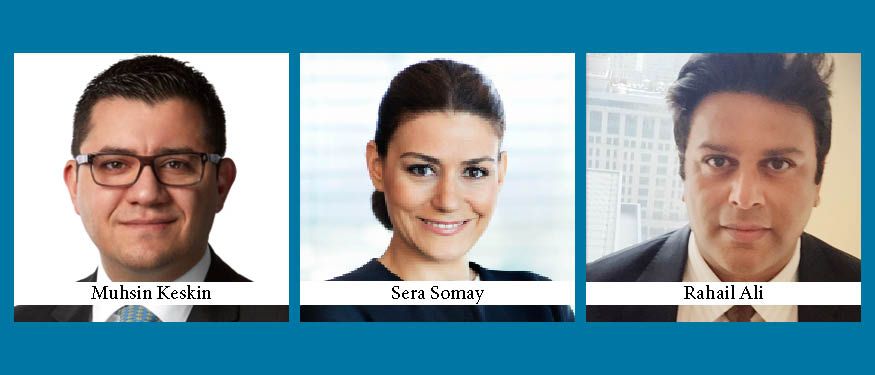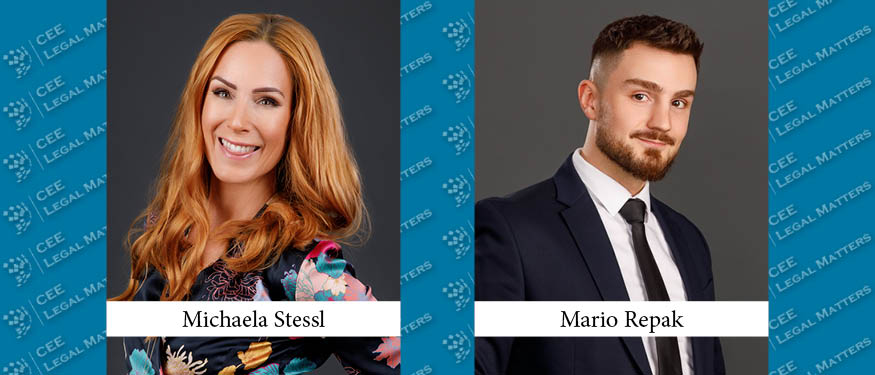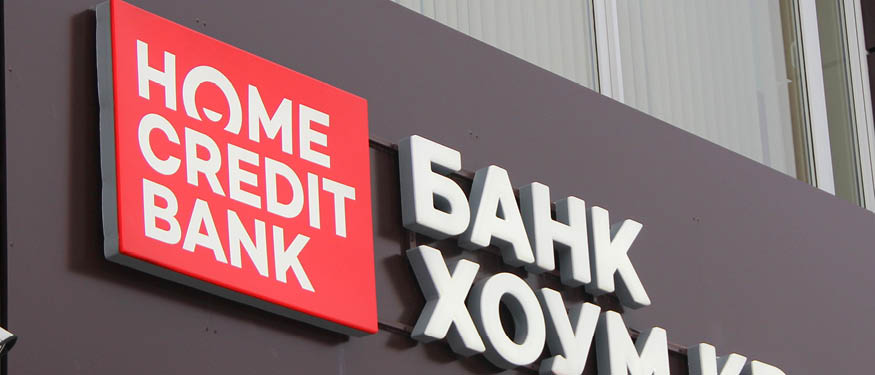The Deal:
On August 15, 2016, CEE Legal Matters reported that the Esin Attorney Partnership (a member firm of Baker & McKenzie International), Hogan Lovells, and Paksoy had advised on Burgan Bank’s USD 87 million and EUR 57 million syndicated multi-tranche term loan agreement with 13 banks from 8 countries. The banks were led by HSBC, acting as coordinator, Arab Banking Corporation (B.S.C.), acting as agent, and Commerzbank Aktiengesellschaft, Filiale Luxemburg, HSBC Bank Middle East Limited, and Mashreqbank PSC acting as initial mandated lead arrangers and bookrunners.
The Players:
- Muhsin Keskin, Partner, Esin Attorney Partnership, a member firm of Baker & McKenzie International
- Sera Somay, Partner, Paksoy
- Rahail Ali, Partner, Hogan Lovells (Dubai)
CEELM: How did you each become involved in this matter? How, why, and when were you selected as external counsel?
M.K.: We were mandated by Burgan Bank to advise them in relation to their inaugural annual syndicated borrowing in 2015 and since then we have been their counsel for banking transactions. [At the time] they reached out to us directly.
S.S.: Paksoy was mandated in June 2016 through Hogan Lovells (Middle East) LLP, the Dubai branch of Hogan Lovells.
R.A.: We have worked on numerous Turkish conventional and Islamic financing transactions with HSBC.
CEELM: What, exactly, was your mandate when you were retained for this particular project (as compared to the final result)?
M.K.: The mandate was to advise them, both English and Turkish law input, for the finance documents, which I think 100% matches to the end result. We were involved from the beginning, the term sheet stage. As this was a repeat deal, the structure was almost in place.
R.A.: My mandate on this transaction was quite comprehensive. I was involved in the transaction from the very beginning. Following our formal mandate, my team started working on the preparation and negotiation of the mandate letter and the term sheet. Immediately after the finalization of these documents, my team set about preparing all the loan documentation and participated in the intense negotiation thereof among the lenders and Burgan Bank. My team supported the lenders as to the satisfaction of the drawdown conditions and led this important process carefully.
My task was very well defined at the outset of the transaction. There was therefore no difference between the initial mandate and final result.
S.S.: Paksoy was mandated to review the agreements from a Turkish law perspective, collect the Turkish law condition precedent documents by directly contacting Burgan Bank, and issue an enforceability and capacity Turkish legal opinion. The final result was in line with the initial mandate.
CEELM: Who were the members of your team, and what were their individual responsibilities?
M.K.: I and Michael Foundethakis (the EMEA head of Baker & McKenzie’s banking team) were the Partners in charge. Serenay Cinki in Istanbul and Nicholas Macheras in Paris helped us with the documentation.
S.S.: [In addition to me], the Paksoy team members were Ozlem Barut (Senior Associate in the banking & finance department) and Soner Dagli (Associate in the banking & finance department). I was responsible for overall supervision. Ozlem Barut was responsible for drafting and Soner Dagli was responsible for the conditions precedent.
R.A.: I led the transaction as the supervising partner. Ahmet Kalafat, a Senior Associate in our finance team in Dubai, was front and center in our deal team and undertook the day-to-day running of the transaction with support from trainee Lucy Kelly.
CEELM: Please describe the final deal in as much detail as possible – in other words, how was the financing structured, why was it structured in that way, and how did you help it get there?
R.A.: The financing needs of Burgan Bank and the regulatory considerations determined the structure of the facility. The facility was structured as a dual-currency facility comprising Euro and Dollar tranches. In order to reduce cost of funding each tranche was split into two, with one having a 364-day maturity and the other 367-day maturity.
M.K.: This was a typical multi-tranche syndicated facility for a financial institution. There were 13 lenders on board.
S.S.: Paksoy did not contribute to the structure of the deal as this was a repeating deal of the previous syndicated loan extended to Burgan Bank in June 2015. The deal was structured as a syndicated facility provided by various banks and the documentation was in LMA format.
CEELM: What was the most challenging or frustrating part of the process? Why?
M.K.: The challenging part was the timeline. The deal closed more or less in two weeks, so everyone had to be more efficient than usual. Everyone knew the closing date from the beginning – this was basically a roll-over deal, so there was not much time or need to lengthy negotiations.
R.A.: Burgan Bank is a well-known financial institution to international financial institutions and has a successfully run banking business in Turkey. As Burgan Bank approaches the market for similar deals on a regular basis, Burgan Bank and the lenders have developed an efficient working relationship on this kind of transactions. Therefore, there was no unusual or extraordinary challenge or setback in the process.
S.S.: In general, the deal was smooth and the parties were cooperative.
CEELM: Was there any part of the process that was unusually or unexpectedly smooth/easy?
M.K.: Other than the speed, this was a smooth process. All parties were reputable financial institutions knowing what they are doing very well and there were not any last minute surprises.
S.S.: In general, the deal was smooth, but the collection of the condition precedent documents process was unusually easy/smooth as Burgan Bank timely delivered all the documents and was cooperative.
R.A.: No.
CEELM: Did the final result match your initial mandate, or did it change/transform somehow from what was initially anticipated?
M.K.: The end result totally matched the mandate.
S.S.: There was no surprise in the deal and therefore it can be easily said that the final result matched our initial mandate.
R.A.: Yes, it did.
CEELM: What individuals at Burgan Bank directed you, Muhsin, and what individuals at the banks advised you, Sera and Rahail – and how would you both describe your working relationship with them?
M.K.: We were guided and directed by Sehnaz Gunay (Department Head, Financial Institutions) and Nesteren Caliskan (Legal Counsel). We spoke almost every day. We managed the talks with the lenders through their counsel and made sure the common understanding was reflected into the finance documents.
R.A.: We have an established working relationship with various teams of HSBC. On this specific transaction, HSBC’s Leveraged and Acquisition Finance team instructed us.
S.S.: We were instructed by the syndication banks through Hogan Lovells (Middle East) LLP. We are an independent law firm. We collaborate with different international law firms on a project basis. We worked on various similar deals with Hogan Lovells (Middle East) LLP in the past.
CEELM: How would you describe the working relationship with your counterparts at Paksoy and Hogan Lovells on the deal, Muhsin, and yours with the Esin Attorney Partnership, Sera?
M.K.: We were dealing with Hogan Lovells. There was a friendly and cooperative environment which made things easier for both counsel. No travels were involved. They were in Dubai. Phone calls and emails were sufficient to get to the closing.
R.A.: They were professional and responsive.
S.S.: We never directly contacted our counterparts at the Esin Attorney Partnership.
CEELM: How would you describe the significance of the deal?
M.K.: The importance of the deal was the fact that it closed right after the coup attempt and S&P’s downgrading with no delays at all. I think It is an excellent indicator of international financial institutions’ trust in the Turkish economy and banking system.
S.S.: The fact that 13 banks from 8 countries took part in this deal proves the confidence which investors have in the Turkish economy and banking system.
R.A.: After lenders and Burgan Bank agreed but before signing the mandate letter and term sheet, a coup attempt took place in Turkey on July 15, 2016. This extraordinary event did not have any negative impact on the transaction. After a few days of internal discussion, the lenders made the decision to continue with the transaction.
This demonstrated that Turkey has a strong banking system in which international financial institutions have great confidence and that we will continue to see similar deals in the Turkish market despite this extraordinary incident.
This Article was originally published in Issue 3.5 of the CEE Legal Matters Magazine. If you would like to receive a hard copy of the magazine, you can subscribe here.

















